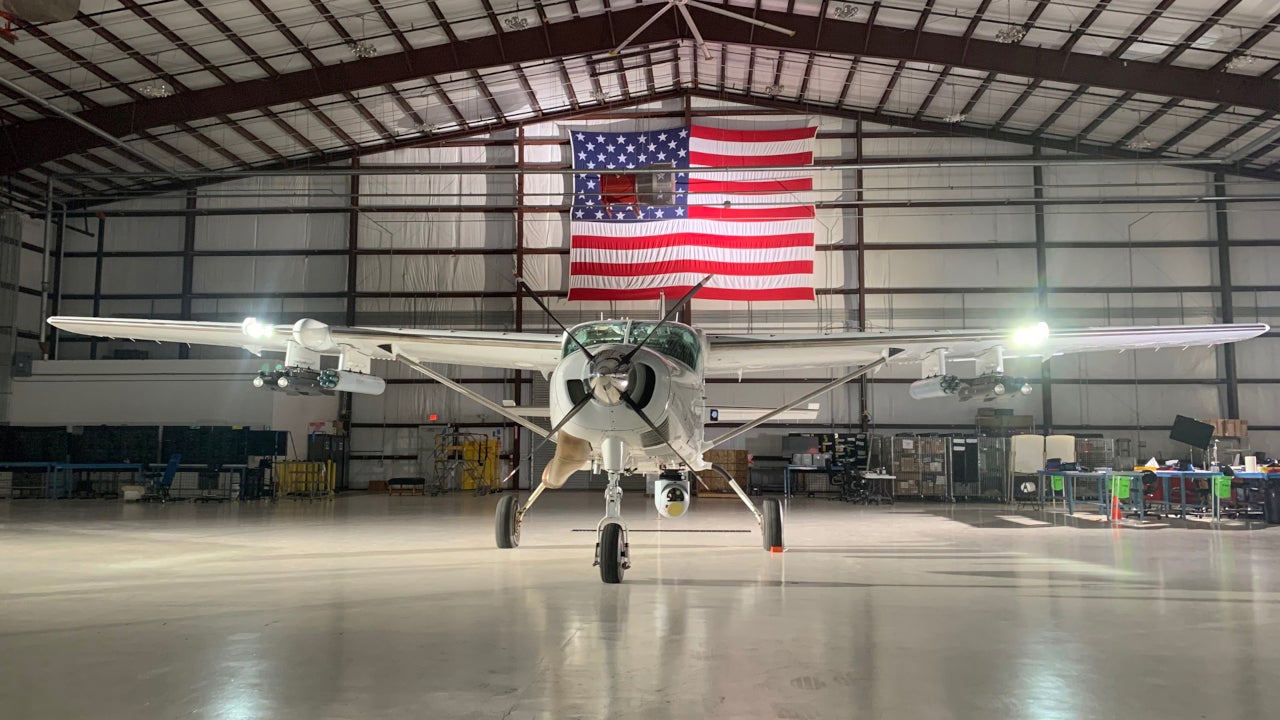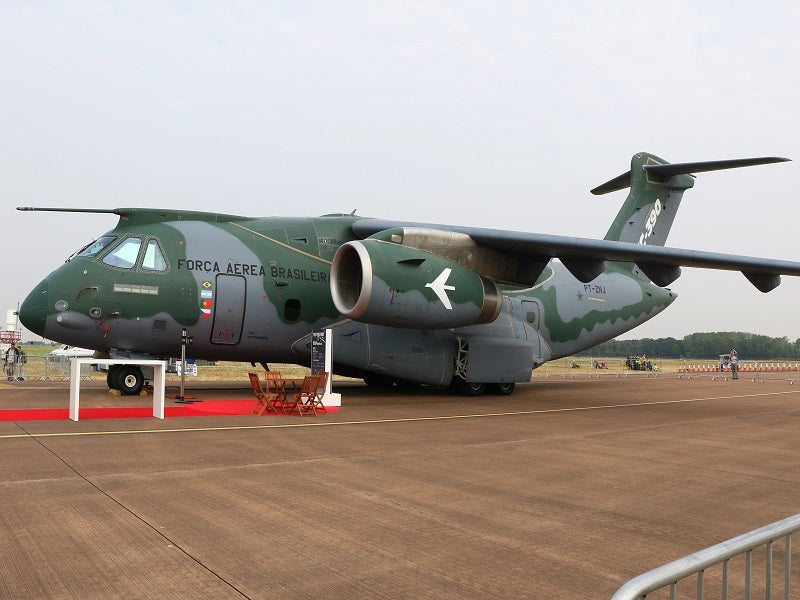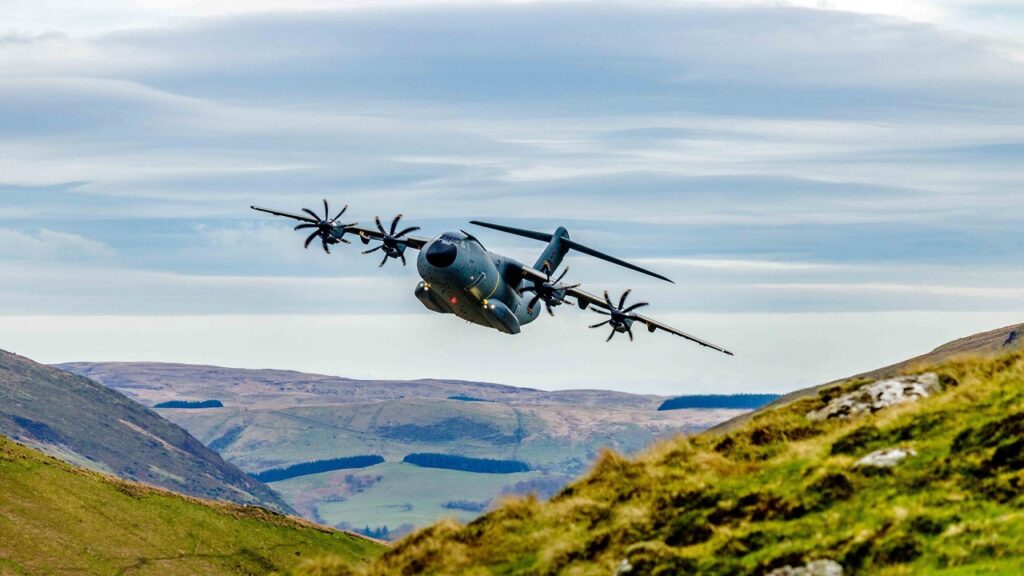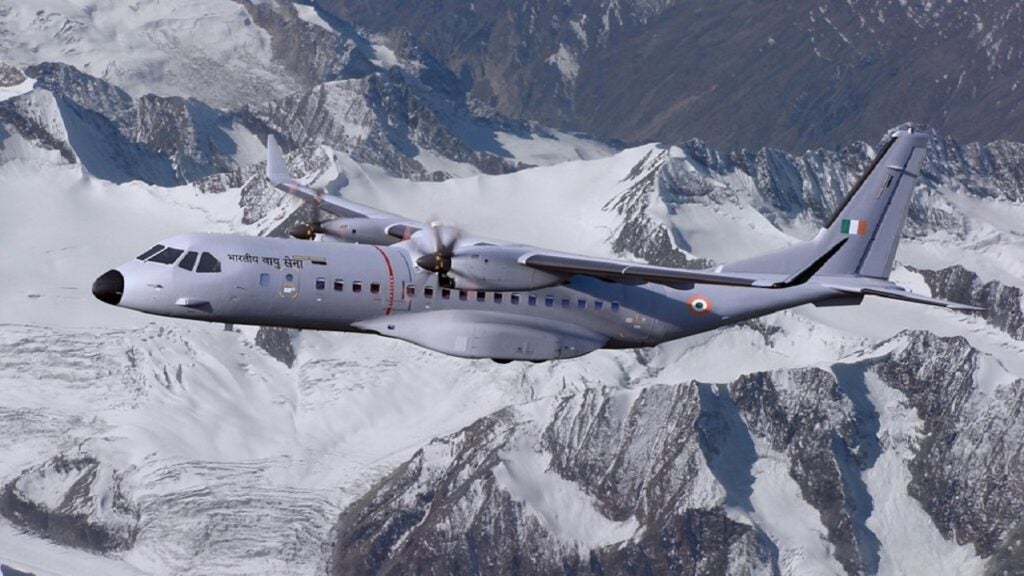
The MC-208 Guardian is a multi-role aircraft developed by US-based defence manufacturer MAG Aerospace. Unveiled in March 2021, it is based on the fully-certified Cessna 208 Caravan utility aircraft and is suitable for operations in austere conditions.
The aircraft is designed to support a range of missions including air mobility, intelligence, surveillance, and reconnaissance (ISR), casualty and medical evacuations (CASEVAC/MEDEVAC), close air support, deployability, and precision strike operations.
The MC-208 Guardian along with four other aircraft was selected for the phase three of the United States Special Operations Command’s (USSOCOM) Armed Overwatch competition in June 2021. The Armed Overwatch programme is aimed at procuring a fleet of flexible, fixed-wing aircraft having small logistical footprint and capable of operating in austere regions.
The USSOCOM is planning to buy 75 manned, fixed-wing aircraft under the programme. MAG Aerospace proposed the MC-208 Guardian as a production-ready platform for the competition.
The aircraft, which has an availability rate of 98%, was awarded multiple supplemental type certificates (STC) from the US Federal Aviation Administration (FAA) for its multi-role configurations, design improvements, and other additional features crucial for austere operations.
MC-208 Guardian deployments, orders, and deliveries
Several variants of the multi-role platform have been fielded across Asia, Africa, and the Middle East in support of the US Department of Defense’s (DOD) Building Partnership Capacity programme, which aims to foster relationships with foreign allies through military training initiatives.
MAG Aerospace delivers customised ISR and armed MC-208 Guardian aircraft to special operations customers in the continental US (CONUS) and outside continental US (OCONUS). The aircraft are produced at the company’s production line in Titusville, Florida, US.
MC-208 Guardian design and features
The MC-208 Guardian serves as a single versatile platform for special missions, eliminating the need for multiple specialised platforms. It is designed to enable ease of deployment, low cost, reduced technical risk, and a small logistical footprint. Its modular architecture will allow for the integration of new sensors and other equipment in future. The aircraft can take-off and land on a 2,030ft unimproved runway.
The aircraft has a length of 41ft 7in, height of 14ft 10in, wingspan of 52ft 1in, and wing area of 279ft². Its maximum take-off weight is 4,110kg, while the maximum landing weight is 4,082kg. The aircraft cabin has a height of 54in and a width of 64in.
An air operable roll-up door is provided that supports the delivery of food and medical supplies by airdrop for ground troops in support of CASEVAC/MEDEVAC missions.
The aircraft can accommodate nine individuals including two crew members. It can be disassembled in 4.5 hours by five crew members and can be transported by C-17 military transport aircraft and reassembled in eight hours. The rapid deployability allows the aircraft to be mission-ready almost anywhere across the world within 48 hours.
The landing gears and brakes are designed to increase the aircraft’s maximum load capacity. The four original equipment manufacturer (OEM)-certified wing-mounted external load hardpoint pylons can carry up to 227kg each, including suspension equipment.
Weapon capabilities
The MC-208 Guardian can be equipped with AGM-114 Hellfire missiles (K-R2), advanced precision kill weapons systems (APKWS) laser-guided rockets (LGR), Hydra 70 folding fin stabilised unguided rockets, Talon LGR, and stand-off precision guided mission (SOPGM). The military standard 1553 and 1760 databus communications interfaces allow the launch of the weapons.
The aircraft’s common launch tube rack system has the capacity to store two SOPGM munitions as an internal launch capability. Up to eight AGM 114 and 14 APKWS LGR can be launched for smaller targets. Hydra 70 is integrated into the aircraft’s weapons loadout to perform air-to-ground suppressive fire and illumination to support the movement of ground forces.
The aircraft is US Air Force (USAF) SEEK EAGLE-certified for safe separation and live firing of the approved munitions. The SEEK EAGLE programme is the certification standard for the aircraft stores compatibility.
The aircraft is also integrated with a ballistic modular armour system.
Cockpit and avionics of the multi-role aircraft
The MC-208 Guardian features a Garmin G-1000 glass cockpit, an integrated avionics system equipped with intuitive displays and controls. The ergonomic design and layout of the cockpit supports multiple roles. The autopilot feature of the aircraft can control ISR flight operations and establish connection with civilian airfield databases for navigation.
Provision is also available for an on-board oxygen generation system (OBOGS) to supply oxygen to two crew members for eight hours during high-altitude missions.
The open architecture capability of the aircraft allows it to be incorporated with the signals intelligence (SIGINT) package as per the clients’ choice. The dual control-configured cockpit allows both the crew members to control all phases of flight operations, including instrument flight rules (IFR), sensors, and weapon systems.
The aircraft features a ballistic armour system made of ultra-high molecular weight polyethylene (UHMWPE) composite laminate to protect the cockpit and occupants.
Communications
The multi-role aircraft can be modified according to the communication requirements across diverse operations. It has internal wiring and antenna provisions for up to six radios, including a situational awareness data link (SADL). It is integrated with a modular multi-sensor station and Ku antenna system for beyond-line-of-site (BLOS) satellite communication (SATCOM).
The aircraft can transmit critical electro-optical/infrared (EO/IR) sensor data over long ranges using BLOS full-motion video (FMV) Ku/Ka and Link-16 via a ViaSat Ku antenna system. The EO/IR sensor system enables laser designation for precise weapons targeting.
Engine and propulsion
The aircraft is equipped with a Pratt & Whitney Canada PT6A-140 turboprop, 867shp engine and four-bladed McCauley constant speed, reversible pitch, and full feathering propellers.
The OEM-certified fuel tanks are equipped with self-sealing foam design capabilities. The on-board auxiliary fuel tank also features a self-sealing liner and a modular armour system.
MC-208 Guardian performance
The MC-208 Guardian can fly at a maximum cruise speed of 186kt and a minimum stall speed of 61kt. It can achieve a maximum range of 1,070nmi.
The aircraft has a service ceiling of 25,000ft with a rate of climb of 1,234ft/min. It has an internal fuel capacity of 1,018kg, which ensures an endurance of more than six hours. An optional internal auxiliary fuel tank with a capacity of 303kg can be added to increase the flight time by approximately 1.5 hours.
Contractors involved
MAG Aerospace partnered with several companies for the aircraft’s development. American aircraft manufacturer Textron Aviation delivered the Cessna 208B EX fixed-wing platform, while aerospace and defence firm MOOG supplied the weapon stores management system.
L3Harris, a technology company based in the US, delivered line-of-sight communications, while its subsidiaries L3 Harris Wescam and L3Harris ForceX supplied the MXTM-15D EO/IR sensor and mission management system, respectively.



